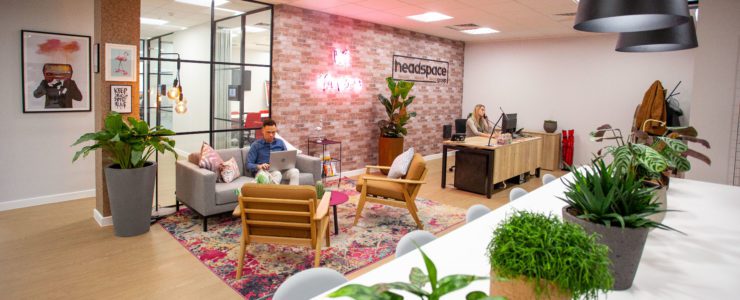
When did coworking begin?
Coworking is a highly successful sector today, with around 3.1 million people using coworking spaces worldwide.
Although the number hasn’t grown since the latest study at the end of 2019, due to the COVID-19 crisis, once things get back to normal, it’s expected to increase to more than five million over the next few years.
We can trace the evolution of coworking as we know it back to 2005, when the concept was officially “invented” by Brad Neuberg, a senior software engineer, who worked at an American start up called Rojo Networks. Prior to this, its roots span back to 1995, in Berlin, Germany.
Where did it all begin?
The official launch of coworking was accredited to Neuberg, but a decade earlier, a group of 17 German computer engineers had created something they called a “hackerspace”, known as C-base, in Berlin. It was a place to meet like-minded people to exchange ideas and codes.
Today, C-base is a non-profit organisation, where people go to increase their knowledge and skills in computer hardware, software and data networks. Although it was never officially labelled a coworking space, the concept was extremely similar, as it was described as “a space for like-minded groups and individuals”.
Fast-forward four years to 1999, when Wisconsin-born Bernie DeKoven, a pioneering online gaming designer, launched the coworking.com website and the Coworking Institute to increase awareness of collaborative work techniques and technology.
Renowned for his gaming-oriented website, deepfun.com, he won the 2006 Ifill-Raynolds Award for Outstanding Achievement from the North American Gaming Association.
Neuberg’s role
Neuberg is generally considered to be the founder of coworking spaces as we know them today. While working for Rojo, he felt dissatisfied and wanted the freedom of working for himself, but without losing the community ethos of being with other people.
He created a new kind of shared office space, calling it the San Francisco Coworking Space, in Spiral Muse, in the Mission district. He paid $300 a month to rent the office space from Spiral Muse, with other co-workers paying when they used it.
Initially, people weren’t sure what coworking was and it was quiet for a month. Then, startup developer Ray Baxter became Neuberg’s first official co-worker and the concept started to grow rapidly.
Neuberg later refuted DeKoven’s involvement in the concept of coworking, saying he had coined the term himself in 2005, without knowing that DeKoven already had a website of the same name.
In an online interview, Neuberg said that although he and DeKoven “briefly connected” on the phone and discussed the term “coworking”, they concluded their initiatives weren’t connected. Neuberg stated definitively, “I invented coworking.”
Coworking growth
In the UK, the first coworking space in the country was set up in Islington, London, by a group of students in 2005. They called it The Hub, gearing it towards social innovation through community involvement.
In 2006, Citizen Space opened in San Francisco, followed by New York’s first coworking space, Brooklyn Coworking, launched by Beka Economopoulos and Noel Hidalgo, in Williamsburg.
The same year, Jelly was launched in New York City by Luke Crawford and Amit Gupta, encouraging other entrepreneurs to start a Jelly group in their home town. More Jelly groups opened throughout 2007 in cities such as Austin, San Francisco and Phoenix.
By 2008, there were 160 coworking spaces worldwide, including a community in most major cities throughout North America and Europe. The Global Coworking Conference was founded in 2009. A year later, 9th August was declared International Coworking Day.
In 2012, there were 2,000 coworking spaces around the world. The sector has enjoyed an annual growth rate of 24.2% to reach today’s unprecedented level. By 2014, around 295,000 people were coworking around the globe – by 2017, there were one million.
In 2018, London was labelled the “capital of coworking”, with more coworking spaces than San Francisco, New York and Berlin, occupying 10.7 million square feet in Central London alone.
While any meteoric rise is expected to plateau in most sectors, coworking looks set to continue to pick up momentum, as more people are choosing remote working and self-employment. Advances in technology are changing the way we can work, so it’s predicted the sector will grow further.
Specialising in the creative, media and technology sectors, Headspace Group is a leading provider of coworking spaces in various locations across the UK including London, Manchester, Birmingham, Belfast, Southampton, Farringdon and Marylebone.
We’re open for business, taking on board government advice about safe working practices, as the UK starts to go back to work. Please contact us to find out more about our coworking offices available.



